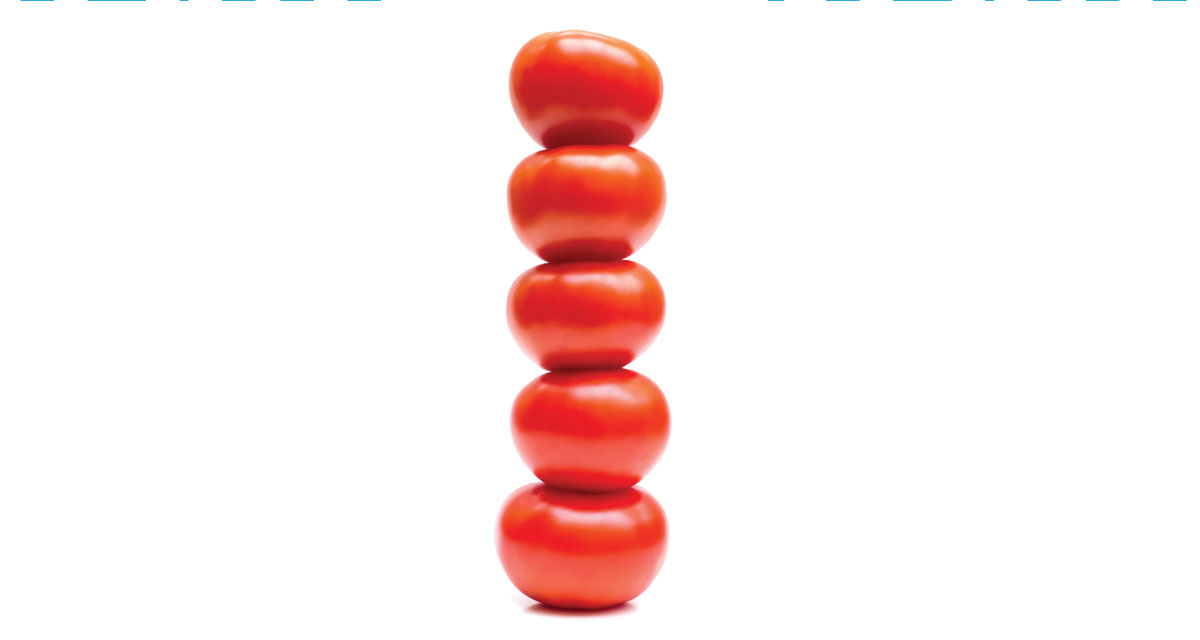The tomato as a food item first originated among the Aztecs around 500 BC. Today, the plump, juicy tomato has advanced to include over 10,000 varieties. Beyond the red coloring, growers can expect to find pink, orange, yellow, white, black, and striped fruit. The great race is alive with anticipation as family members, friends, neighbors, and co-workers strive to produce the first red tomato, usually setting the date before July 1st. What does it take to grow such a tender, warm-season crop, rich in vitamins A and C?
Varieties
Most times, stating the growing season as between 60 to 100 days until harvest isn’t enough information; gardeners of the Piedmont Triad wouldn’t choose, for instance, a Celebrity tomato that requires 78 days until maturity; instead, consider one of the following tomato varieties:
- 68 to 69 days: Garden Peach, Legend, and Mrs. Mawel Big Italian,
- 70 days: Black Krim, Chocolate Sprinkles, Container’s Choice, Green Pear, Momotaro, and Rebekah Allen
Tip: If you have a southern-facing window, start seeds early, approximately six to eight weeks before planting between optimal months, April through June.
Tip: Good starter plants with dark green leaves have sturdy stems (as thick as a pencil). If plants are kept in a greenhouse or indoors, consider keeping the seedlings in the shade, gradually moving towards full days of direct sunlight. Don’t forget to water!
A Planting Technique
Change your planting tactic to support the tomato’s willowy structure.
Fact: Tomato plants do not favor wet leaves. Watering needs to occur just at the roots.
Technique: Create a five-to-six-inch mound of compost-enriched soil. After removing the bottom limbs from the trunk, create a 75% slate for the seedling; then, cover with soil, allowing the top leaves to show. Place stakes and the cage immediately after planting to ensure the plant is not impacted or damaged by its support structure.
Effect: Roots will grow directly from the stem and form strong taproots deep within the soil, encouraging a stable structure. If needed, place a marker at the location of the roots to help know exactly where to water.
Fertilizer: Annuals are often heavy feeders and rely on nutrients to reach their full potential. Many growers experience end-blossom rot, a brown rot developing at the bottom of the fruit from a lack of calcium. A solution is bone meal, which is high in phosphorus, moderate levels of calcium, and a small amount of nitrogen. Sprinkled directly into the soil at planting, the natural fertilizer releases slowly, offering the plant small doses across time.
Spacing: For maximum growth potential, tomato plants need air ventilation and light; therefore, proper spacing is vital for large varieties. The ideal distance is between 24 to 36 inches and spaced in rows four feet apart. In addition, consider applying a layer of newspaper, straw, or two to four inches of mulch to control weeds.
Pests and Planting Companions
Simply looking at the plant isn’t enough. Pick up leaves and look underneath for aphids. Another particularly challenging pest is a green caterpillar called the tomato hornworm, which will consume leaves and fruit non-stop until removed. One way to help protect your plants is by attracting beneficial insects to consume your aphids and hornworms; therefore, add basil, dill, and marigold throughout your rows. Even if you don’t use the herb or flowers, be pleased that it may save your crop!
Best Watering Times
Most seeds or transplants require ample moisture to encourage a robust root system. Watering early in the morning, directly onto the roots at the soil level, helps plants make it through a hot day. After gaining height, tomato plants only need deep watering at least once weekly.
Suckers
To prune or not to prune? The age-old question! Tomato suckers are small side shoots that grow between a branch and the main stem. Without removing, the sucker will continue to produce additional leaves and fruit, weighing down the trunk and resulting in a bushy plant. The effect alters the airflow and sunlight to the fruit. While many gardeners forgo the task of suckering, consider the benefit—it reduces the risk of disease and produces larger, healthier tomatoes.
Since our zone 7B offers a broad timeframe to plant tomatoes, consider taking a few suckers and placing them in a cup of water to develop roots. A late crop can offer the benefit of continuing the season, if you can batches of your favorite tomato-based recipes!
*Lisa is an N.C. State Master Gardener volunteer with Stokes County and a state-certified beekeeper.



















